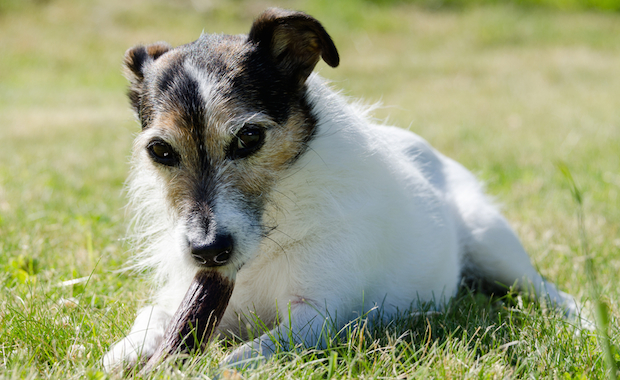Recently I’ve been sharing tales from my daily life as a professional dog trainer. I use them to illustrate the subtlety of canine body language and to demonstrate how crucial it is that all dog owners correctly and quickly read their pup’s communication. After all, man’s best friend understands us well — usually better than even spouses, if you believe certain studies. We owe it to dogs to learn how they communicate with each other and to us.
I’ve worked with a darling little mixed-breed dog named Baxter for more than a year now. He looks just like a miniature Boxer. He came from the local shelter, so his owners don’t know anything about his history. They learned in a matter of days, though, that he had severe separation anxiety — I’ve written about how we helped him with that anxiety.
He also began leash lunging at other dogs as well as getting into fights during off-leash hikes. His owners are big hikers, and they loved seeing Baxter run through the woods off leash where legal to do so (we call him the Brown Rocket). He loved to run so very much, but they had to stop letting him off leash after a few altercations.
To help Baxter with this behavior, I began by observing him around other dogs, including my own non-reactive pack. I needed to understand why Baxter was lunging at other pups. Was he a frustrated leash greeter? Were the other dogs being rude in their approach? After Baxter’s owner took him through two of my reactive-dog classes, I often used Baxter as as an example because he had made so much progress. However, he still presented what I call “snarky” behavior on off-leash hikes and when around my dogs and other dogs in class if they got too close to him and any kind of food was present, even boring kibble.

If you had any kind of food on you, Baxter could tune out the world. In fact, he was downright frantic when food appeared. We even reduced the intensity of the flavor of training treats to see if he would get as jazzed about a dry biscuit as a meat treat. He would frantically gobble ANYTHING without seemingly even tasting it.
Food created anxiety or perhaps conflict for him, and it sent him into overdrive, especially if another dog was present. Perhaps he had been a starving puppy or food was scarce? Who knows? We could only go by his body language and change in energy every time food appeared.
I noticed a very subtle shift in his body language near my big friendly dog Monster one day. I did not see, but Baxter sure did, that Monster was lying next to a bone. Baxter spied the bone and stood over it, and in a mere millisecond, he gave my dog the canine warning of a hard stare and stiff body. It happened so quickly that a person would need to know canine body language well to understand what they were seeing. I got up, called Monster to me, and then swiftly picked up the bone.
We’ve been working on having Baxter be with my dogs while they all have their own space to work on a bone. He’s made terrific progress. I do not let him “work it out” with my dogs because his anxiety around food or chew bones is too high for it not to escalate into a fight. If there is no food present, he has zero conflict with other dogs now, even those rude greeters he meets on the trail as he is now able to resume his off-leash mountain hikes.

We continue to work on his “snap” judgment or response to food being present, and he is able to handle it better and better every month. We had to show him that just because another dog is nearby when food is present, he will not lose his share. Last time he came for a visit, we all enjoyed a cookout for the humans while Baxter and my dogs each enjoyed their own bone in their own spaces, contentedly chewing within mere feet of one another. Baxter is just one more reason we have to learn and then honor canine communication.





